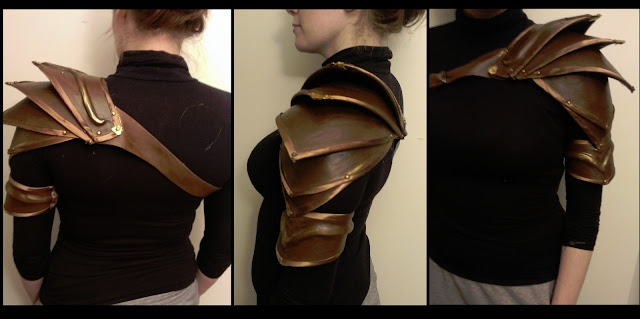My other Vi costume tutorials.
So Worbla it is! If you haven't heard of this material before let me give you a few facts. It is a thermoplastic sheet which can be heated with heat gun or warm water. the material then gets flexible and can be shaped, bent or molded in any way, and even better remolded if you need the materials for something else later. You only need scissors to cut it, and all leftovers can be molded together so you don't waste any material.
You should check out Kamui's video tutorials. She uses a double layer of worbla, but I am only going to use one layer and reinforce it with a fabric lining later.
I was going to build this
Photo: Official concept and splash art by Paul Kwon and Official 3 Model by Le Roy Stauss for Riot Games
There are some differences between the in game model and the splash art, but since there is only one photo of the version I want I had to supplement the design with details from other photos.
Step one: make the pattern, I just traced a bra ;)
And cut out the shape in Worbla. Then I heated it and shaped it around my body. This would have been easier with a manequin.
For the cups you can use whatever half spheres you can find in the right size. I ended up with using the paldrons from my big sister costume as a base. For good measure I sprayed cooking grease on my mold. When the piece of worbla was warm and plyable I used my hands to shape it over my mold. Be careful not to stretch it too much as it will get thinner and eventually tear.
To attach the cups to the rest you simply warm up the edges and worbla will stick to itself, no glue needed. And it sticks surprisingly well together.
then I covered the top with masking tape to draw up the details.
During the process some bulks appeared, but just reheat that area and use you hands to smoothen the bumps out.
In an later tutorial I will write about how to paint worbla.
More Vi tutorials.



























































